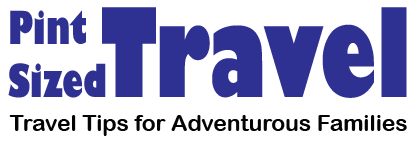Every American knows the story of California’s Gold Rush. With the discovery of gold in 1848, the territory experienced a massive transformation as people migrated west in search of their fortune. Today, California’s gold-embedded past lives on. Nicknamed the Golden State, even San Francisco’s 49ers football team is a nod to the 300,000 “forty-niners” who staked their claims in hope of finding gold.
The state also nurtures its golden era in other ways. For instance, there are whole towns that have been meticulously preserved to showcase California’s formative past. You just have to know where to look.
A good place to start is in California’s Sierra Nevada Mountain Range. It is not only the state’s largest historical producer, but it also has the most active placer mining districts. Here, you can pan for gold on your own, as well as get a true sense of what the Gold Rush was all about.
I suggest beginning with my family’s Top 4 towns for finding gold in the Golden State. I’ve also included another town that is only a short drive from North Lake Tahoe, as an added bonus.
Marshall Gold Discovery State Historic Park, Coloma
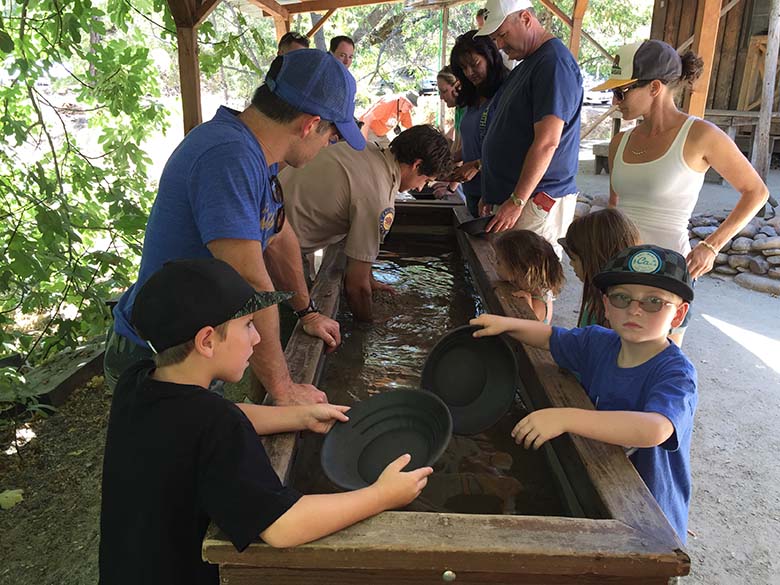
The Granddaddy of them all, Coloma is where California’s Gold Rush officially began. It all started on January 24, 1848 when James Marshall found gold flakes in the streambed of a lumber mill that he had built for John Sutter. News quickly spread to San Francisco and Washington, D.C. and, by that summer, the area’s population had jumped to 4,000.
Today, both the site of Sutter’s Mill and the site of Marshall’s gold discovery are the foundation for Marshall Gold Discovery State Historic Park. Although it is accurate to say that the park also encompasses most of the historic town of Coloma. Unfortunately, the original saw mill is long gone. However, there is a full-sized replica in its place, as well as some original timbers in a display nearby.
There are also a number of noteworthy buildings that you can visit. These include a working blacksmith shop, Bekeart’s Gunshop, the I.O.O.F. Hall, and various cabins and homes. In addition two structures remain from when Chinese miners came to this part of the Golden State to find gold. The first is the Man Lee building, which served as a Chinese trading, banking and hardware store. The second is the Wah Hop Store, which sold traditional food, clothing, and other products.
But it is not just gold panning history that remains in Coloma. If you take a walk along the Gold Discovery Loop Trail, you will find some bedrock mortar up above a picnic area. This was where the indigenous Nisenan people would grind acorns, which they then turned into a kind of bread. Today, the mortar shows the holes left behind from the grinding.
For pint sized visitors, you can pick up a Junior Ranger Activity Book in the visitor center and museum. This will help you navigate the town and focus learning in an age-appropriate way. Although I highly recommend taking your kids through the museum. It does a really great job of visually showcasing the town’s history. Finish your day with a little gold panning and some ice cream on Main Street.
Columbia State Historic Park, Columbia
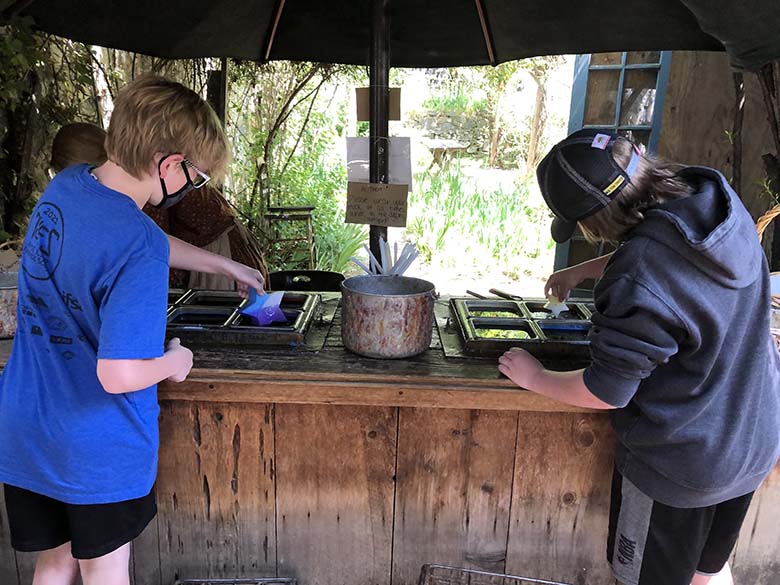
Like Marshall’s in Coloma, the Columbia State Historic Park has done an awesome job of preserving the entire historic downtown of Columbia. Yet, rather than just looking after its historic buildings, it has taken things one step further. Throughout the town you will find friendly docent volunteers dressed in period costume. Each one is only too happy to explain what Columbia was like in 1850. The end result is a unique interactive experience that feels like you’ve gone back in time.
That’s not to say that the historical buildings aren’t impressive. The park contains the largest single collection of Gold Rush era structures – many of which are over 150 years old.
For kids and, if I’m honest, adults, Columbia is a smorgasbord of wonder and wow. It is impossible not to have fun. You are also guaranteed to learn something new. Take a stagecoach ride from outside the Wells Fargo building, pan for gold at Matelot Gulch Mining, hand dip your own candle into colorful wax, or get a personalized horseshoe from Parrott’s Blacksmith. Along the way, check out the old jail, as well as California’s first two-story brick schoolhouse.
If you want to make a day of it, there are plenty of places to get lunch – not to mention treats. I can highly recommend Nelson’s Columbia Candy Kitchen which handmakes candies and confections the old-fashioned way. Their fudge is to die for!
Gold Bug Park & Mine, Placerville

This park is a lot smaller in size than my previous two recommendations. However, it still packs a punch. Only eight miles down the road from Coloma, Gold Bug represents the next stage of how to find gold in the Golden State. You see it wasn’t long before gold panning operations ran dry in the region. This happened around 1857 in Coloma, and the late 1860’s in Columbia. But that didn’t mean there wasn’t gold to be found. You just had to get into the rock itself. And that is exactly what the Gold Bug hard rock mine did.
Today, you can take a self-guided audio tour inside the 352-foot mine shaft and see the actual veins of quartz running inside. If you look hard enough you can even see a glint of gold inside the quartz. Well ventilated because of an airshaft, the tour takes you all the way to the end of the mine, and past an offshoot that didn’t get very far. Hard hats are required for adults and tall kids because of the low ceilings but, other than that, the tour is completely safe with good lighting.
Just down the road from the mine is the Stamp Mill. You can either get to it from the road itself, or take the scenic Stamp Mill Trail along a seasonal stream. Situated in front of the Silver Pine Mine, the Stamp Mill is a fascinating piece of 20th century equipment. Using eight massive iron stamps, the machine literally pounds rock into powder. This frees fine particles of gold, which it then traps on a bed of mercury. Even though the amount of gold inside each individual piece of rock would have been teeny tiny, a Stamp Mill could crush an incredible amount of ore each day; making it highly profitable. The tour itself is a bit technical. However, your child should get a basic understanding of how a Stamp Mill operated from a small working replica. They will also be fascinated by the extensive mineral collection downstairs.
Above the Stamp Mill building is a working blacksmith shop. For my kids, this was the highlight of their trip. They watched one demonstration after another from a very knowledgeable and skilled blacksmith. And I have to say that I learned a lot about how iron was forged back in the day too. Make sure you check it out. If you are lucky, the blacksmith may give your kid a forged souvenir.
Old Sacramento
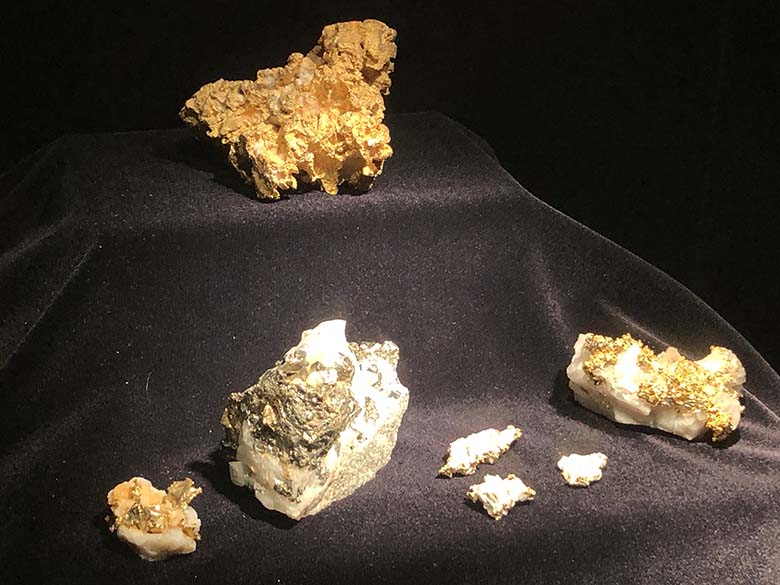
The history of California’s state capitol, Sacramento, is very much tied to the Gold Rush. Prior to 1840, explorers considered the area to be unfit for colonization. As such the city’s origin really lies with John Sutter, who secured land and settled in the area with a vision of creating a fortified settlement called New Helvetia. However, it was the discovery of gold at Sutter’s Mill in nearby Coloma, that really put Sacramento on the map. Seeing the opportunity, John Sutter’s son turned a wharf that his father had built into a hub for traders. The location was perfect because it sat at the junction of the American and Sacramento Rivers.
While Sutter’s fortunes and businesses ultimately failed over the course of the Gold Rush, Sacramento itself flourished. Within five years, the city was the western terminus of the Pony Express postal system. It also became the western hub for the first transcontinental railroad and the first transcontinental telegraph. In Old Sacramento, you can still find remnants from this bygone era.
Technically a State Historic Park in its own right, Old Sacramento features more than 50 historic buildings including the B.F. Hastings Building, and the Huntington & Hopkins Hardware and Old Sacramento School House museums. As such it is a great area to wander and soak up the past.
However, it is the Sacramento History Museum where you will really learn about the Gold Rush and how it shaped the city. The museum has plenty of historical images and artifacts to look at as well as interactive exhibits that either share information or test what you have learned. But the thing that blew my kids’ minds was the gold display, collected by a Bank of America branch manager called Charles Crespi. The collection is exquisite and features various rare and beautiful gold-laden rocks, nuggets and jewelry. Purchased over several years, Crespi eventually sold his personal collection to Bank of America in 1959. It is now on long-term loan and is said to be worth more than half a million dollars.
Virginia City, Nevada
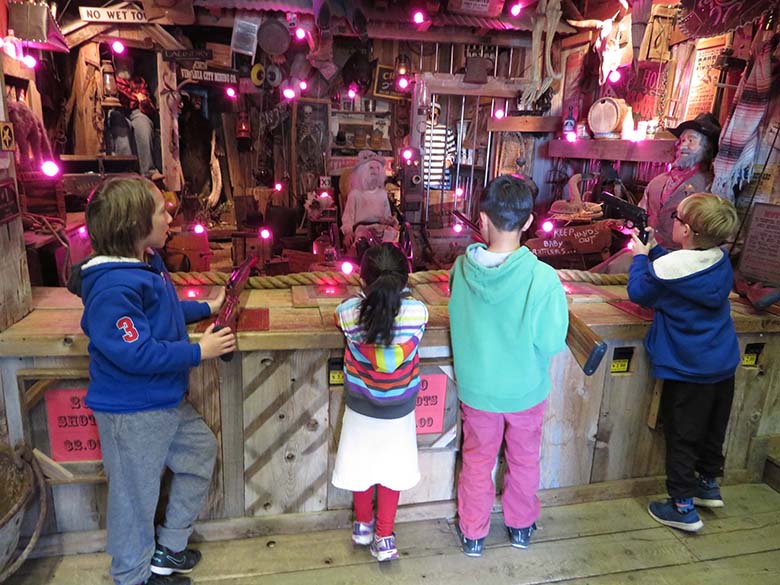
Virginia City is my bonus destination because this little wild west mining town isn’t actually in California. However, like Coloma in the neighboring Golden State, it did spark a gold rush of its own when Henry Comstock found silver, and then gold, in 1859. Located on the other side of Reno, Virginia City has also held tightly onto its past. And, similar to Gold Bug, prospectors had to get their gold out of hand-dug ore.
If you are advancing in years, like me, you may remember Virginia City as a recurring film location for the Bonanza television show. Every time Ben, Hoss, Adam and Lil’ Joe rode in for supplies, or a night out on the town, it was Virginia City they were riding into.
A good way to get an initial feel for the town is via its Trolly Tour, which will point out important landmarks, including various buildings, mines, and burial sites. Your tour guide will also share plenty of colorful stories about what life was like during the Gold Rush.
Afterward, you can cherry pick which things you want to see and experience in more detail. For instance, you can take tours of the Chollar Mine and the Ponderosa Mine. Visit the Way It Was Museum. Test your skills at the gun shooting gallery. Or try your hand at gold and gem panning at the Virginia City Mining Company. From May to October, you can also catch the Virginia City Outlaws Wild West Comedy Show featuring comedic gun fights and stunts. There is also a 35-minute steam train ride that you can take on the historic Virginia & Truckee Railroad. And, for kids that love to dress-up, you can even have an old-time photo taken of your family.
Happy Travels!
